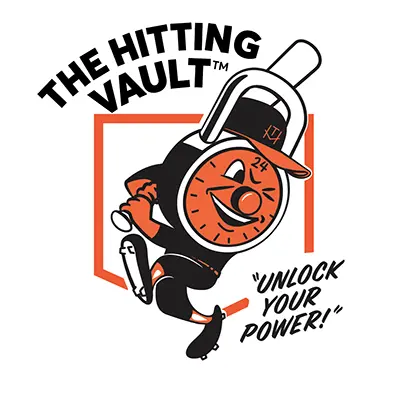How do you help a player who is struggling at the plate? How do you approach “failure” with your players. Baseball and softball are tough sports mentally. Coaches need to understand what they can do and say to help their hitters work through the tough times. Coach Lisle explains his thoughts on how to teach this in this week’s video!
My Philosophy on Hitting is Simple
- Do Damage
- Get on Base
Those are the two things that we’re going to focus a lot of attention on, and how do we do that?
For my hitters, and what we constantly teach at The Hitting Vault, is that we want to do damage. We want to swing hard. I want my hitters to constantly be asking themselves in the batter’s box, is this a good pitch to hit, and is this a pitch that I can do some damage with.
After that initial approach, it’s also important to understand that getting on base is the goal of this game. Scoring runs is the goal of this game.
Baseball and softball hitters need to understand that a walk sometimes is as good as a hit, and grasp the mental process behind that approach. Baseball and softball is a game of failure, and it’s important to be open and talk about that with your hitters.
I would say my best advice when it comes to failure, when it comes to the mental approach, is that you’re going to see that you could have a hitter at any level hit 400, and they could have a string of going 0 for 12, 1 for 13, 2 for 20, and still hit 400. And they will.
I can tell you that I’ve done research on Mike Trout, and in the years that he’s won MVPs, he’s gone 1 for 19, 2 for 25 in stretches, 0 for 18 in stretches, and still won the MVP.
Mike Trout is undeniably one of the best hitters in the game, so I try to talk a lot to my players on the mental side of understanding that there are going to be stretches where you’re going to go 4 for 4, and stretches where you go 0 for 12, and you can still have these great years.
Biggest Mistake Coaches Make
The biggest mistake the coaches make is we know who our best hitters are. For example, you know this hitter is my best hitter, and they are 0 for their last 8. And we start thinking, maybe I should move him down the lineup while they’re in this hitting slump. Maybe I should take them out of the lineup. I would tell you that the actual number of when I would do that is around 30 at-bats, because you know this person’s your best hitter.
So what are we defining their stats or their success on? Is it those two games at 8 at bats? Maybe they just had a bad day. There’s other stuff– family stuff’s going on. All those things.
I think we have players in that 7 to 12 range that it’s harder, but I think you know who your top two or three hitters are, and I think that as coaches, we are quick to pull the plug, move them in the lineup, drop them down because they’re in a slump after eight at-bats.
And then at the end of the day, they still hit .500 for your team.
The Mental Approach
From a mental aspect, when you’re talking to your players and even yourself, understanding that this is how this game works–ups and downs– and understanding that you can go 0 for 12 and still hit 400 or 500, or whatever the number is.
Too often I see players and coaches that are struggling through 7 to 10 at-bats of unsuccess, and that’s when they start going, maybe I need to change my swing. Well, maybe I need to do this, or maybe I need to do that.
Related reading: Don’t Listen to Naysayers!
I’ve gotten text messages on a daily basis after major league baseball games saying, what do you see in my swing? Every night, what do I need to change? And the other guys who, once a month, send me a text message– “Hey, I’ve been struggling with this for about a month.”
And I would just say that as players and coaches, we do the same thing. After two days, maybe I’m dropping my hands. Maybe I’m doing this. Maybe my front side is doing this.
Where to Focus During a Slump
I would say that the first thing, when a player comes to me and says, “I’m not seeing the ball well. I’m really struggling at the plate- something’s wrong.”
The very first thing that comes to my mind is timing and the mental approach. I always start by asking them, what are you feeling? What is really happening? Let’s talk about that. Especially as you get to higher levels, players can feel their movements and that’s generally the best place to start in terms of getting to the root of the problem.
The swing, their mechanics and movements is the very last thing that I want to talk about in regards to a hitters unsuccess in this small stretch.
The Hitting Vault is the most popular, most trusted and highest rated online hitting community.
It was created to teach athletes how to move their body to unlock their most powerful swing. It’s designed to help coaches get optimal results from their athletes. Join and get access to over 100+ exclusive videos for members and step-by-step instruction so you’ll know exactly what to do next to unlock your power at the plate.

